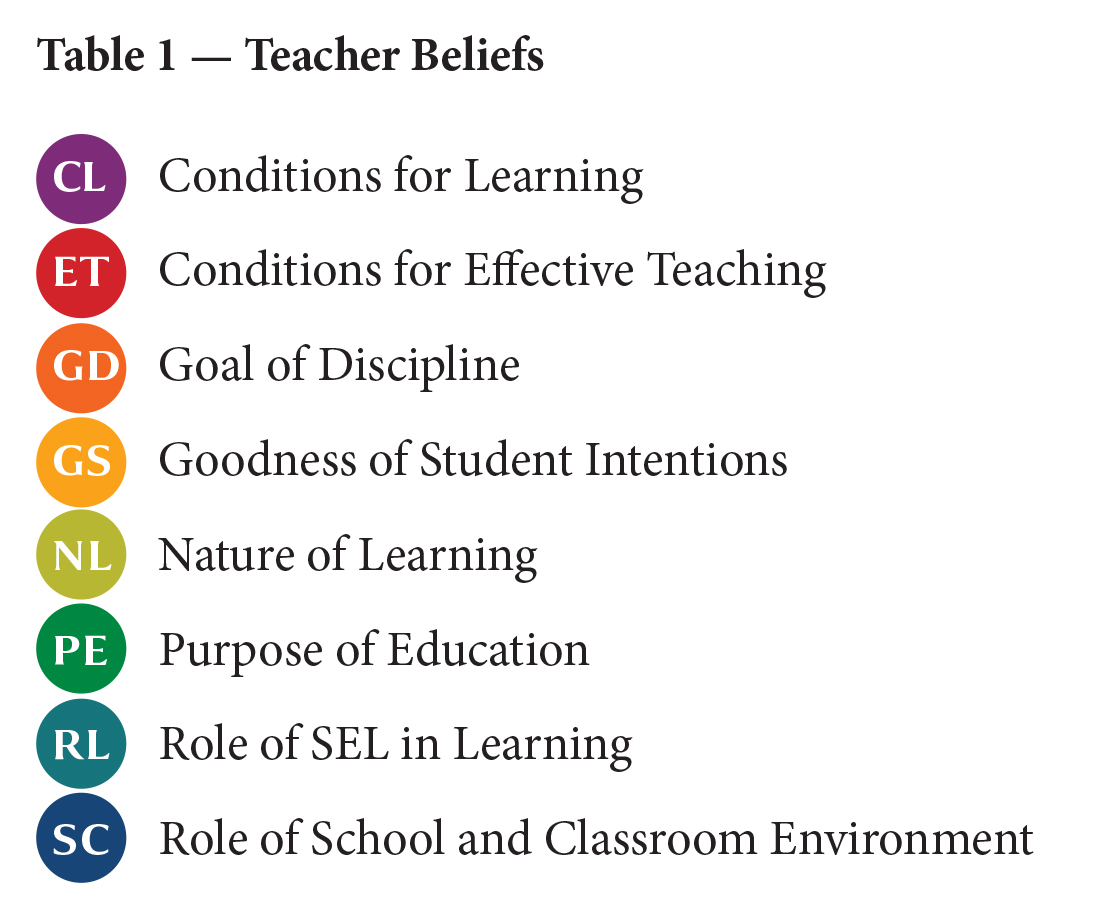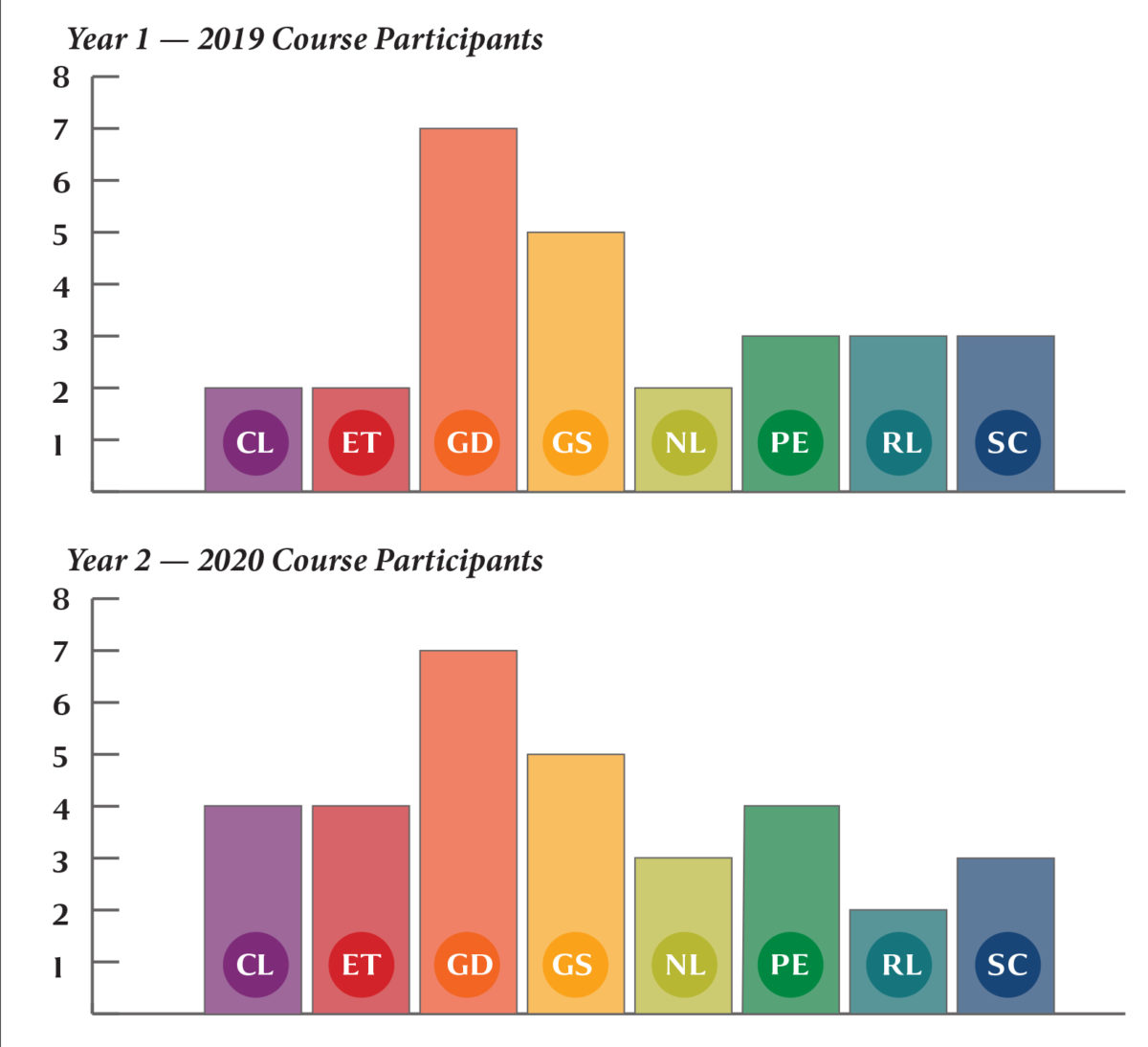Introduction
Teachers are considered by many to be the centerpiece of educational change (Dat-now & Castellano, 2000). Researchers have observed that teachers must see themselves as the originators of change for school reforms to be effective. Those teachers who find their ideology in line with a new program or curriculum usually support it, whereas others may resist change due to their conflicting beliefs.
For these reasons, the Responsive Classroom approach aims to foster a unique set of teacher beliefs that are considered to be critical to teachers’ educational approach. Teacher beliefs emphasized throughout our professional development are closely aligned with Responsive Classroom practices and foster the successful implementation of social-emotional learning (SEL). Throughout Responsive Classroom courses, teachers are encouraged to reflect on their beliefs and describe how their beliefs and their actions affect their classroom learning community.

Responsive Classroom courses demonstrate a statistically significant change in beliefs (Gerstner, 2020). The t-test is statistically significant at the 1 percent level.

Study
The two-year Teacher Belief Study was designed to analyze how effectively teachers acquire and strengthen beliefs aligned with Responsive Classroom practices after attending a four-day Responsive Classroom course. Center for Responsive Schools (CRS) conducted the study by having educators take a survey before and after they participated in either the Elementary Core Course or the Middle School Course. The survey items were based on eight teacher belief domains (see Table 1) that CRS identified as critical to teachers’ educational approach.
The Teacher Belief Survey was developed by CRS staff including course facilitators, instructional developers, and researchers in Spring 2019 and piloted in July/August 2019. In year one, a total of 1,786 educators took the pre-survey, and 703 educators took the post-survey. We were able to match the pre- and post-survey data of 690 participants for this analysis, allowing us to assess changes that occurred. In year two, the Teacher Belief Survey was revised (based on our findings in the previous year) and re-administered in May-July 2020. A total of 1,272 educators responded to the pre-survey and 402 educators responded to both the pre- and post-survey.
Key Findings
The results of year one of the study showed that Responsive Classroom courses significantly change teacher beliefs (see Figure 1). Teacher beliefs in all eight domains increased. The largest changes occurred for the Goal of Discipline (domain 3) and Goodness of Student Intentions (domain 4). The results of year two of the study support our previous findings. Changes in teacher beliefs for the Goal of Discipline (domain 3) and Goodness of Student Intentions (domain 4) were the largest. Changes in year two were overall slightly larger than in year one. The reliability estimate (Cronbach’s alpha) for the entire survey for year one and year two is large, which indicates that the survey has high consistency.
Significance
Discipline is one of the greatest promoters of inequity. We know from research that “students of color and low-income students, who are more likely to experience external stressors outside of school, are less likely than their peers to report high levels of support, safety, and trust in school, and they are more likely to experience punitive disciplinary practices” (The Aspen Institute National Commission on Social, Emotional, and Academic Development, 2019). We also know that “black American students are far more likely to be suspended or expelled and, conditional on an office referral, more likely to receive stiffer punishments. These disparities […] are associated with long-term outcomes, including employment and involvement in the criminal justice system” (Riddle & Sinclair, 2019).
Responsive Classroom courses have the biggest impact on teachers’ beliefs about two of the key factors that inform a teacher’s approach to teaching and discipline: the Goal of Discipline and Goodness of Student Intentions.
- Goal of Discipline: Belief that the goal of discipline is to teach students to be in control of themselves and to choose socially and morally responsible behavior because it is the right thing to do, not because of fear of punishment or hope of reward. Belief that teaching students self-discipline and self-control develops goal-setting, problem-solving, and critical thinking skills and helps them to become good citizens who exhibit prosocial behaviors and demonstrate respect for self, others, and property.
- Goodness of Student Intentions: Belief that educators should hold and communicate positive beliefs and expectations for all students, including those who may have different values than they do; are culturally, racially, or socioeconomically different from them; who appear disengaged and unmotivated; or who struggle and misbehave. Belief that problem behaviors result from unmet needs or lack of skills rather than the student’s character, family background, or intention to do harm.
By matching these changes in beliefs with actionable practices, Responsive Classroom courses position educators to become change agents who can address systemic educational disparities and inequities by embracing a nonpunitive approach to discipline and using what they know and believe about their students to inform their approach to discipline.
Recommendations
Educators seeking to bring about systemic school change to address issues of equity would benefit from the use of the Responsive Classroom approach and individuals currently implementing the Responsive Classroom approach should pay particular attention to nurturing change in beliefs alongside concrete Responsive Classroom practices to create the equitable systemic conditions for social, emotional, and academic learning.
